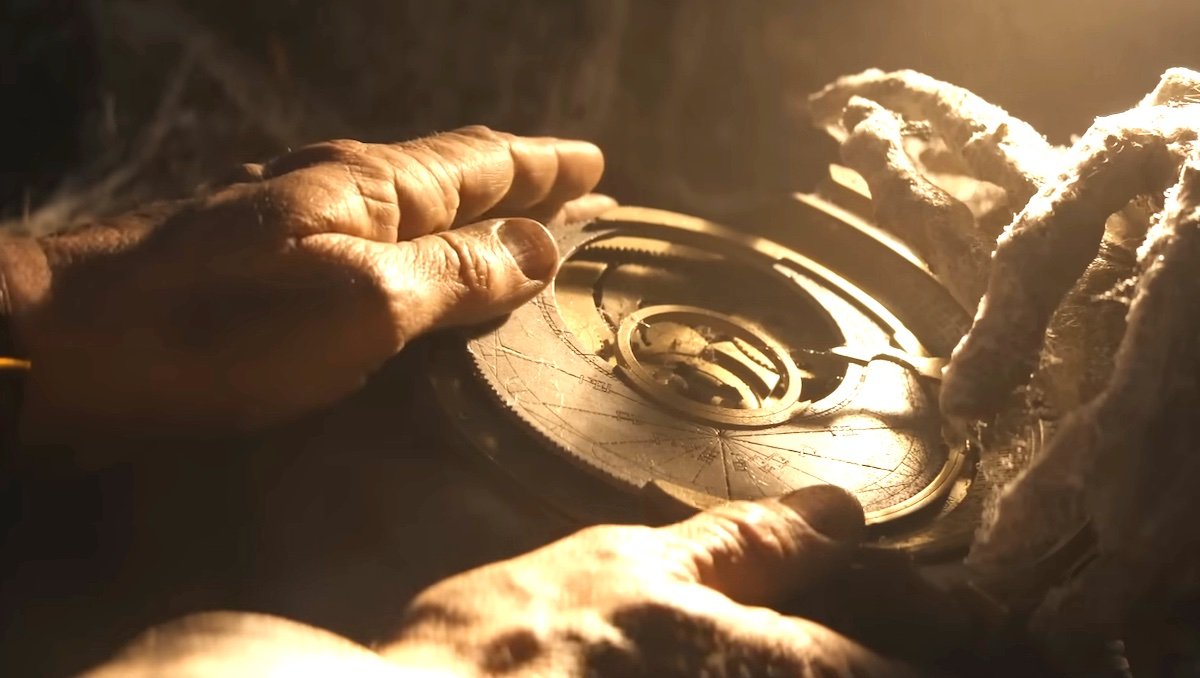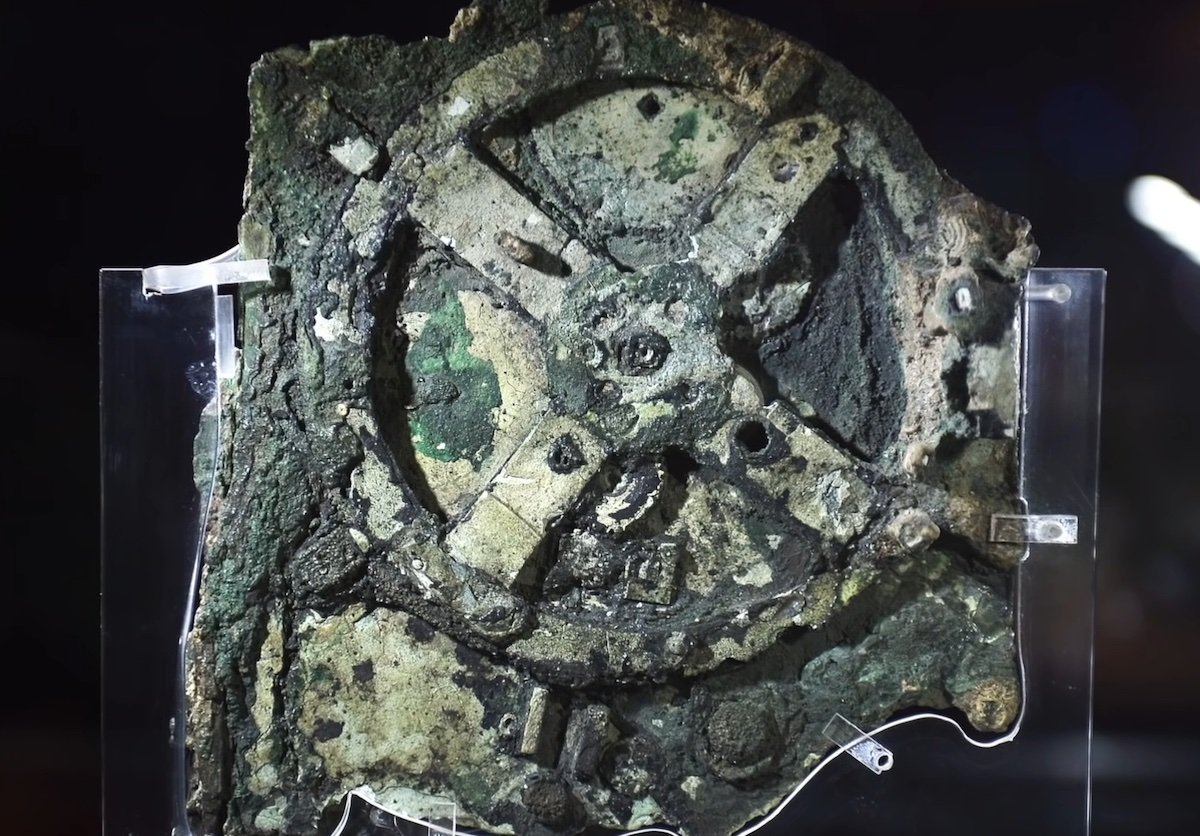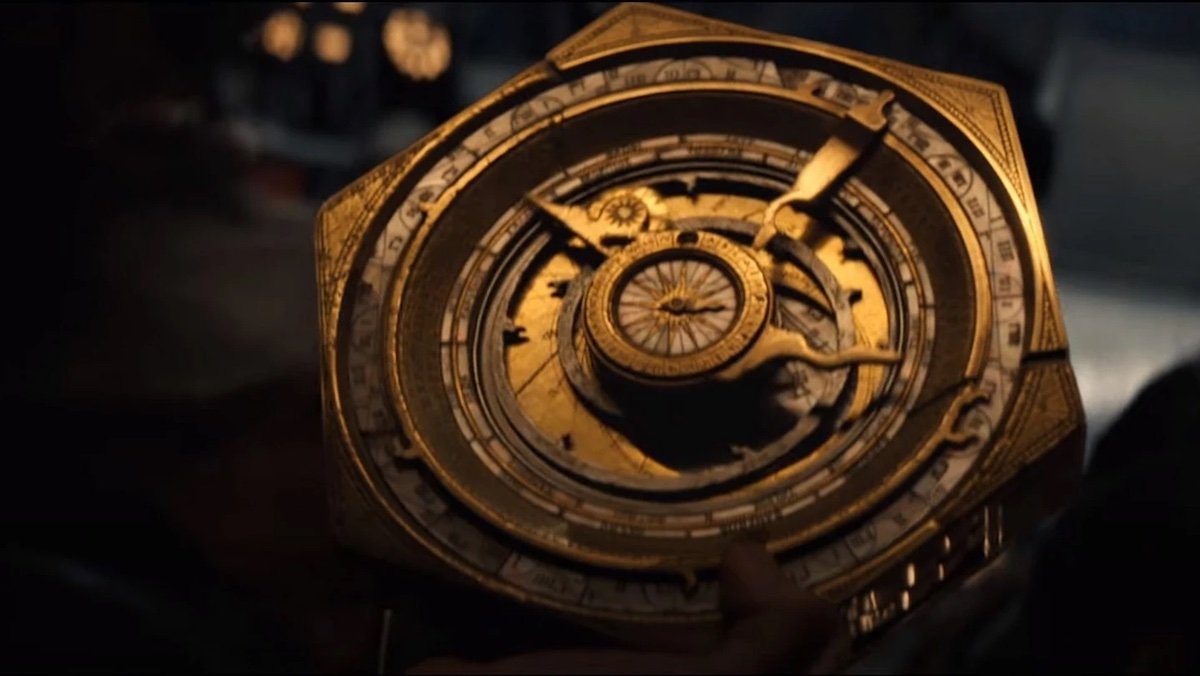Rather than religious artifacts or a transdimensional being’s skull, Indiana Jones and the Dial of Destiny features a very different kind of relic. It came from human hands. The franchise’s final film revolves around the search for an incredible piece of scientific equipment, the titular dial of Archimedes known as the Antikythera. But was that device merely a Hollywood’s creation? Or was it based on an actual machine? The story of the real antique that inspired the Dial of Destiny is one worth going back in time to explore.

Is Indiana Jones‘s Dial of Destiny Based on a Real Machine?

The fictional Dial of Destiny is based on a very real machine of huge historical importance. Sponge divers discovered the Antiikythera mechanism while searching the wreckage of an ancient Greek trading vessel between 1900 and 1901. The ship is thought to have sunk more than 2,000 years ago, sometime between 70 and 60 B.C.E.
The wreckage sits near the coast of the Greek island that gives the machine its name. Among the ship’s many priceless treasures was a bronze device unlike anything else ever found from the ancient world. The intricate handheld contraption—which measures 13.4 x 7.1 × 3.5-inches in size—had fractured into three main components and 82 fragments in total. But even broken it stands as a wonder without equal from antiquity.
The Antikythera features advanced, complex technology found nowhere else in the ancient world. More amazing is that it has gear wheels, dials, and pointers which do not reappear in recorded human history for more than a thousand years after the device’s creation.
Like Indiana Jones‘ fictional version, the real Antikythera is a device out time.
Why Is the Antikythera Mechanism Called the “First Computer?”
The Antikythera is considered the world’s first computer. As the Smithsonian Magazine writes, it’s 30 interlocking interior gears could “predict eclipses, track the movement of the sun and the moon, and even see when sporting events like the Olympics were scheduled to take place.”
A machine that could compute complex motions of the cosmos, and was so far ahead of its time by at least a millennium, seemed like it could only be the work of one ancient inventor. And that’s exactly who some scientists now believe is responsible for it. It’s the same historical figure Indiana Jones and the Dial of Destiny credited for building its own version, the great Archimedes.
Who Was Archimedes and Why Do Scientists Believe He Designed the Antikythera?
Archimedes, born in the Ancient Greek city of Syracuse, Sicily, lived from 287 to 212 B.C.E. He spent most of his life in Syracuse and died there during a Roman sack of the city, just as The Dial of Destiny showed.
The legendary figure is ancient Greece’s greatest and most celebrated mathematician and inventor. Just as Professor Jones said in class, Archimedes made incredible scientific discovering and designed famous devices. While some might be only legends, others, like Archimedes screw, are still used to this day. And he’s associated with water just like Indy told his goddaughter. The “Eureka” story of how Archimedes figured out how to determine if gold was real or fake is timeless.
Some scientists now credit the genius without peer during his lifetime as the inventor of the Antikythera mechanism even if the evidence indicates he did not build the only version ever found. The latest any researchers have dated the device’s creation is to around 204 B.C.E., after Archimedes died. But its technological prowess and a seeming ancient historical reference to the device points to Archimedes as the person behind it.
To know for sure, we’d need to go back in time and ask him ourself. But the real Antiikythera mechanism now located at the National Archaeological Museum in Athens, Greece won’t get us there. The Dial of Destiny’s time travel possibilities are (no surprise) purely fictional.
Why Did Indiana Jones‘ Dial of Destiny Make Time Travel Possible?

The Antikythera mechanism was an inspired choice for Indiana Jones‘ titular Dial of Destiny. But splitting the fake version up into two working parts easily reassembled was only a small part of how the film fictionalized the actual machine’s capabilities. The real fun came from the way the movie repurposed Archimedes’ device into a method of traveling through time.
The fictional version didn’t just track the movement of celestial beings. It could also track when fissures in time occurred naturally. Knowing about them allowed anyone using the device to travel back to specific moments and locations in the past.

Well, so long as you also accounted for Continental Drift. Otherwise you didn’t get to change World War II’s outcome. Instead you ended up exactly where Archimedes wanted you to arrive: during his greatest moment of need. Then he got your watch.
A bridge (of time) too far to take the lore of the Antikythera? Maybe for other inventors’ machines, few of which would be worthy of having Henry Jones Jr. search for it. But if anyone could have figured out time travel it was Archimedes. And if he did, he was definitely too smart to tell the rest of us about it. So it’s possible Indiana Jones’ Dial of Destiny wasn’t as fictional as we thought.
Mikey Walsh is a staff writer at Nerdist. You can follow him on Twitter at @burgermike. And also anywhere someone is ranking the Targaryen kings.

